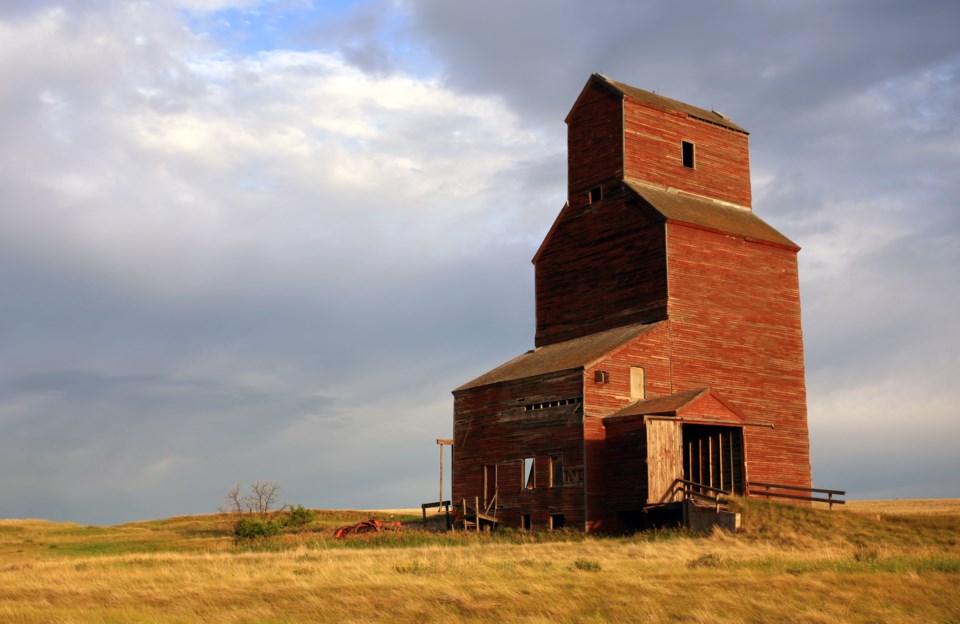In the U.K., about a third of people surveyed recently were considering giving up that bastion of British domesticity, Sunday roasts. Not because eating beef is a kick in the pants for the environment, or it’s too expensive, but because energy bills are through the roof.
With Canadian food prices up another 10.4 per cent in January after a similar hike in December, you may well be considering something similar, what with sirloin steaks hitting 22 bucks apiece, lettuce up 35 per cent… The list goes on.
Food is costing us more and more, and aside from eating less and less of it—one of my best pals lost weight just by trying to eat 10 per cent less—the only way around it all is to use our smarts, or at least a few tips from those practical stalwart Canadians who have been there, done that many times before.
In the 1960s, a good friend of my mom’s from Edmonton bought all the gal-pals in her circle a copy of the Josephburg Ladies’ Aid Society Cookbook. Like so many cookbooks of the time, it was a fundraiser, the second one the society had put out from the tiny rural hamlet (current population, 117) east of Fort Saskatchewan, Alta.
The whole thing is a work of wonder.
Not only is it full of easy, down-to-Earth recipes, you’re also entertained by all kinds of ads supporting the fundraising effort, from the Alberta Wheat Pool (think of all that flour!); Canada Packers (shortening); and local businesses like Flo’s Beauty Lounge, Quick Clean Coin Laundry and Clarkson’s Groceteria & Men’s Wear (“We Deliver”). Now there’s a combo you seldom stumble on these days!
Yes, food styles—and business models—come and go, but I have to say that over my years of cooking and feeding myself—well, I might add, and often on a very low budget—I’ve often found that the kind of practical recipes made with nutritional, low-cost and, often overlooked, ingredients like those in the Josephburg cookbook aren’t only easy and fast to make (think of all the things farmwomen had to tend to!), they’re also plain good and tasty.
They had to be. There was nary a convenience store or Blenz in sight, and no prairie woman in her right mind would want to displease her hard-working husband, or any of the (99-per-cent male) farmhands.
On that note, here’s a muffin recipe from my dear 95-year-old mom, still the best, and healthiest, baker and cook on the planet. It’s one she’s made for 60 years and I’ve just made for the first time, with perfect results—they disappeared in 48 hours!
So a big thanks to Mrs. Stewart Becker. (Yes, that’s how women of that era identified themselves in public—by their husband’s first and last names, shielded from any possible identity of their own.) She provided the original recipe for these lovely pumpkin muffins that I figure cost a couple of bucks to make for a full dozen—enough to share with pals.
Note, this recipe has adjustments my mom figured out over the years, like less sugar, and oil instead of shortening (I told you she was healthy!), but I’ve noted the originals, too.
Beyond muffins and Thanksgiving, plain tinned pumpkin is a lifesaver, one often overlooked. It’s cheap, substantial, tasty and high in vitamins A and K, iron, potassium, and fibre. One 796-milliletre tin is enough for three batches. Or freeze what you don’t use for delicious soups (ask ChatGPT for a recipe) or a side dish using mashed carrot and parsnip—more overlooked veggies—with a dash of nutmeg, orange zest, salt and butter.
Cook diced carrot and parsnip in as little water as possible (save energy; see above). Drain and save the pot liquor and mash it back in with the pumpkin as needed, or drink it as a tonic, like pioneers used to give to pregnant women as a nutrition-rich pick-me-up.
Prairie women’s pumpkin muffins
1 c. tinned pumpkin
1/4 tsp. soda
1/2 c. canola oil (a good Canadian prairie product. The original recipe calls for shortening.)
3/4 c. sugar (I use raw sugar but any will do. The original recipe calls for 1 1/4 c. sugar, but 3/4 c. is plenty, especially when adding chocolate chips)
2 eggs
2 c. flour (we prefer unbleached, but all-purpose is fine)
2 1/2 tsp. baking powder
1/2 tsp. salt
1/2 tsp EACH of nutmeg, ginger, cinnamon
Throw in a handful of raisins, nuts or chocolate chips, as you like.
Pre-heat oven to 375 degrees. Stir the soda into tinned pumpkin in the measuring cup. In a big bowl, mix the sugar and oil. Crack the eggs into a small cup and beat lightly with a fork. Add to the sugar/oil. Mix well. In a separate small bowl, mix all the dry ingredients together lightly with a fork after sprinkling the spices and salt across the top of the flour. (The original recipe says to sift them, but I doubt anyone has a sifter now.) Starting with about 1/2 cup of flour mixture, mix the dry ingredients into the sugar/oil/eggs, alternating with about 1/2 c. of pumpkin until you use it all up. Mix as little as possible. (That’s the secret of light muffins! Don’t overmix them.) Add extras, as above. Line your muffin tins with papers; fill about 2/3 full. Bake at 375 for 15–20 minutes, until a toothpick or straw comes out clean. When done, move your muffins onto a cooling rack, or cock them up sideways in the tin so their bottoms don’t steam.
Glenda Bartosh is an award-winning journalist who is excited to discover tinned pumpkin outside of pie.




